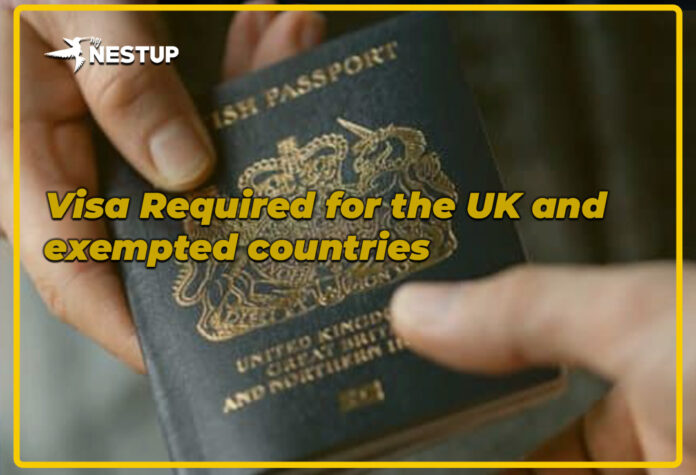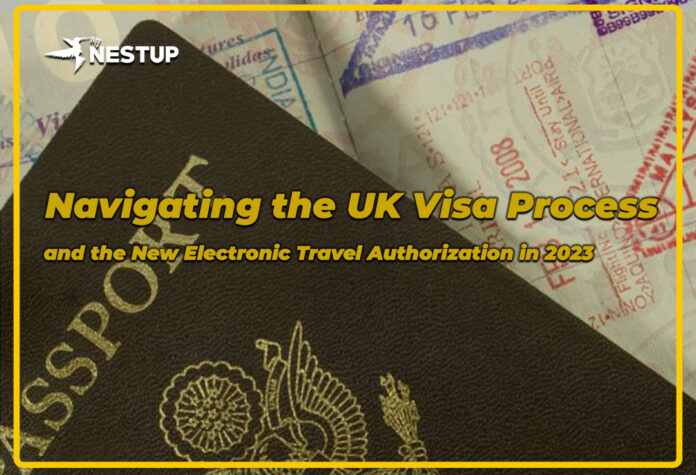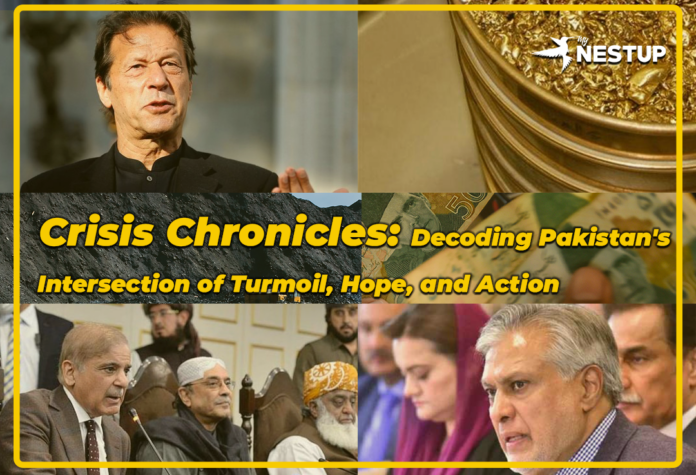Around 150 nationalities require a visa in advance for the UK. There are various types of UK visa, depending on the foreign national’s purpose of entering the country.
The UK Standard Visitor visa permits a foreign national to visit the United Kingdom for leisure, business (including sports-related, artistic, and entertainment events), and medical treatment. These generally allow the holder to stay in the UK for up to 6 months.
According to UK immigration policy, foreign nationals require a residence card to live in the country and a work visa to work in the UK economy. There are a number of different types of British work visa, depending on the length and type of work.
There are separate visas available for people who wish to get married, study, or join family already living in the UK.
Each type of UK visa has its own set of requirements.
UK Visas and Immigration (UKVI) is a division of the United Kingdom’s Home Office. It has many UK Visa Application Centres around the world where foreign nationals can attend an appointment to apply for a visa.
As part of the application process, the UK visa policy requires an international traveler to submit biometric identifiers (fingerprints, digital image of the face, etc.) unless the individual plans to visit the Channel Islands only.
Residents of various countries and territories must be tested for tuberculosis if they plan to stay in the UK for 6 months or more.
See below the list of nationalities that require a visa to visit the UK and Crown dependencies.
Visa Required for the UK: Country list
Afghanistan
Aland Islands
Albania
Algeria
American Samoa
Angola
Anguilla
Antarctica
Armenia
Aruba
Azerbaijan
Bangladesh
Belarus
Benin
Bermuda
Bhutan
Bolivia
Bonaire
Bosnia and Herzegovina
British Indian Ocean Territory
Burkina Faso
Burundi
Cambodia
Cameroon
Cape Verde
Cayman Islands
Central African Republic
Chad
China
Christmas Island
Cocos Islands
Colombia
Comoros
Congo
Cook Islands
Cuba
Curacao
Democratic Republic of the Congo
Djibouti
Dominican Republic
Ecuador
Egypt
Equatorial Guinea
Eritrea
Ethiopia
Falkland Islands
Faroe Islands
Fiji
French Guiana
French Polynesia
Gabon
Gambia
Georgia
Ghana
Gibraltar
Greenland
Guadeloupe
Guam
Guernsey
Guinea
Guinea Bissau
Guyana
Haiti
India
Indonesia
Iran
Iraq
Isle of Man
Ivory Coast
Jamaica
Jersey
Jordan
Kazakhstan
Kenya
Kyrgyzstan
Laos
Lebanon
Lesotho
Liberia
Libya
Macedonia
Madagascar
Malawi
Mali
Martinique
Mauritania
Mayotte
Moldova
Mongolia
Montenegro
Montserrat
Morocco
Mozambique
Myanmar
Nepal
New Caledonia
Niger
Nigeria
Niue
Norfolk Island
North Korea
Northern Mariana Islands
Pakistan
Palestinian Territory
Peru
Philippines
Pitcairn Islands
Puerto Rico
Reunion
Russian Federation
Rwanda
Saint Barthelemy
Saint Helena
Saint Martin
Saint Pierre and Miquelon
Sao Tome and Principe
Senegal
Serbia
Sierra Leone
Sint Maarten
Somalia
South Africa
South Georgia and the South Sandwich Islands
South Sudan
Sri Lanka
Sudan
Suriname
Svalbard and Jan Mayen
Swaziland
Syrian Arab Republic
Tajikistan
Tanzania
Thailand
Togo
Tokelau
Tunisia
Turkey
Turkmenistan
Turks and Caicos Islands
Uganda
Ukraine
United States Virgin Islands
Uzbekistan
Venezuela
Vietnam
Wallis and Futuna
Yemen
Zambia Zimbabwe
Visa Policy for the United Kingdom
The visa policy of the United Kingdom of Great Britain and Northern Ireland (UK) is the list of requirements and restrictions for nationals of other countries who wish to visit the UK.
The UK visa policy covers the four constituent countries that make up the United Kingdom: England, Scotland, Wales, and Northern Ireland, as well as the Crown dependencies of the Isle of Man and the Channel Islands (the Bailiwick of Guernsey and the Bailiwick of Jersey).
There are a number of different types of visa for the UK. The type required depends on the foreign visitor’s nationality, length of stay, and purpose of travel.
Travelers from the majority of countries must apply for a visa for the United Kingdom at their nearest UK Visa Application Centre.
Types of visa that can be obtained at an application centre include the Standard Visitor visa for the purposes of tourism, business, and medical treatment, the Marriage Visitor visa, the UK work visa, various categories of student visa, and a number of other visa options.
Around 90 different nationalities currently do not require a visa to enter the UK for stays of up to 6 months.
The Electronic Visa Waiver (EVW) for the United Kingdom is currently required for citizens of a small number of visa-exempt countries. This electronic travel authorization can be obtained by completing an online application.
These same nationalities, as well as citizens of Jordan, will soon be required to apply for the electronic travel authorization (ETA) instead. The UK ETA will become mandatory for nationals of Qatar in November 2023, and other eligible nationalities in February 2024.
It is also expected that the ETA for the UK will become an entry requirement for other visa-exempt citizens later in 2024. This may include citizens of the European Union and Schengen Area.
See below further information about the UK’s rules and regulations regarding entry visas.
Tourist Visa Policy for the United Kingdom
The visa or travel authorization required to visit the United Kingdom as a tourist depends on the nationality of the foreign traveler.
Nationals of a select few countries must apply online for the UK electronic visa waiver (EVW), which allows them to visit for purposes of tourism. All travelers from these countries, including children, must have a valid EVW to enter the United Kingdom or Crown dependencies.
The UK EVW permits holders to stay in the UK for up to 180 consecutive days.
The Standard Visitor visa functions as a UK tourist visa, as well as covering visits for purposes such as business and visiting family. This multi-purpose visa replaced various other UK visas and permits foreign nationals to visit the UK for tourism.
The Standard Visitor visa for the UK can be obtained by completing an application form and attending an interview at a UK Visa Application Centre.
Nationals of UK visa-exempt countries will soon require a UK ETA to visit for tourist purposes. It will first become available for citizens of Qatar in November 2023, nationals of other GCC countries and Jordan in February 2024, and then other visa-free travelers.
Such travelers will be able to register their details online in order to apply for this electronic travel authorization. This will be a simple application process.
Learn more about the UK’s policy on tourist visas below.
United Kingdom
Electronic Visa Waiver (EVW) Required
Embassy or Consular Visa Required
Visa Not Required
EVW for the UK
The Electronic Visa Waiver (EVW) for the United Kingdom is a travel authorization rather than a visa.
It is a requirement for visitors from a small number of countries, all of which are found in the Persian Gulf. Citizens of these countries do not need a visa to visit the UK, but they do need an EVW prior to traveling, according to UK visa policy.
Eligible travelers are required to complete the simple online application form for the UK EVW. This involves submitting some basic personal details, passport information, and travel plans.
The traveler must have a valid biometric passport, the details of which must be registered on the application. The approved UK EVW is then electronically linked to this passport.
A copy of the approved EVW is sent to the applicant by email. It can then be printed and presented along with the traveler’s passport upon arrival at UK border control.
All visitors to the UK from eligible countries must have a valid EVW to gain entry. Parents or legal guardians may complete the application on behalf of minors.
Consult the list below to see which nationalities require the EVW for the UK.
EVW for the UK: Country list
- Bahrain
- Kuwait
- Oman
- Qatar
- Saudi Arabia
- United Arab Emirates
or
UK Electronic Travel Authorization
The Electronic Travel Authorization (ETA) for the United Kingdom is a visa waiver due to launch in late 2023.
It is a multiple-entry travel authorization valid for 2 years from approval, or until the passport expires. It allows the holder to visit the UK for up to 6 months per entry.
The UK ETA is an electronic authorization system that functions in a similar way to Canada’s eTA and the ESTA for the United States. The system will add an extra level of security screening for visa-exempt travelers that eliminates the need to obtain a visa.
The ETA for the UK will first become an entry requirement for nationals of Qatar on November 15 2023, before being rolled out to citizens of other GCC countries and Jordan on Febuary 22 2024.
It is also expected that other countries will subsequently be added to the ETA eligibility list. These may include EU and European Free Trade Association (EFTA) passport holders, and other visa-exempt nationalities such as US citizens and Australians.
Like the EVW, the ETA for the UK can be acquired by applying online.
Find more information about travelers who will be eligible for the UK ETA below.
Visa Required for the UK
Around 150 nationalities require a visa in advance for the UK. There are various types of UK visa, depending on the foreign national’s purpose of entering the country.
The UK Standard Visitor visa permits a foreign national to visit the United Kingdom for leisure, business (including sports-related, artistic, and entertainment events), and medical treatment. These generally allow the holder to stay in the UK for up to 6 months.
According to UK immigration policy, foreign nationals require a residence card to live in the country and a work visa to work in the UK economy. There are a number of different types of British work visa, depending on the length and type of work.
There are separate visas available for people who wish to get married, study, or join family already living in the UK.
Each type of UK visa has its own set of requirements.
UK Visas and Immigration (UKVI) is a division of the United Kingdom’s Home Office. It has many UK Visa Application Centres around the world where foreign nationals can attend an appointment to apply for a visa.
As part of the application process, the UK visa policy requires an international traveler to submit biometric identifiers (fingerprints, digital image of the face, etc.) unless the individual plans to visit the Channel Islands only.
Residents of various countries and territories must be tested for tuberculosis if they plan to stay in the UK for 6 months or more.
See below the list of nationalities that require a visa to visit the UK and Crown dependencies.
Visa Required for the UK: Country list
- Afghanistan
- Aland Islands
- Albania
- Algeria
- American Samoa
- Angola
- Anguilla
- Antarctica
- Armenia
- Aruba
- Azerbaijan
- Bangladesh
- Belarus
- Benin
- Bermuda
- Bhutan
- Bolivia
- Bonaire
- Bosnia and Herzegovina
- British Indian Ocean Territory
- Burkina Faso
- Burundi
- Cambodia
- Cameroon
- Cape Verde
- Cayman Islands
- Central African Republic
- Chad
- China
- Christmas Island
- Cocos Islands
- Colombia
- Comoros
- Congo
- Cook Islands
- Cuba
- Curacao
- Democratic Republic of the Congo
- Djibouti
- Dominican Republic
- Ecuador
- Egypt
- Equatorial Guinea
- Eritrea
- Ethiopia
- Falkland Islands
- Faroe Islands
- Fiji
- French Guiana
- French Polynesia
- Gabon
- Gambia
- Georgia
- Ghana
- Gibraltar
- Greenland
- Guadeloupe
- Guam
- Guernsey
- Guinea
- Guinea Bissau
- Guyana
- Haiti
- India
- Indonesia
- Iran
- Iraq
- Isle of Man
- Ivory Coast
- Jamaica
- Jersey
- Jordan
- Kazakhstan
- Kenya
- Kyrgyzstan
- Laos
- Lebanon
- Lesotho
- Liberia
- Libya
- Macedonia
- Madagascar
- Malawi
- Mali
- Martinique
- Mauritania
- Mayotte
- Moldova
- Mongolia
- Montenegro
- Montserrat
- Morocco
- Mozambique
- Myanmar
- Nepal
- New Caledonia
- Niger
- Nigeria
- Niue
- Norfolk Island
- North Korea
- Northern Mariana Islands
- Pakistan
- Palestinian Territory
- Peru
- Philippines
- Pitcairn Islands
- Puerto Rico
- Reunion
- Russian Federation
- Rwanda
- Saint Barthelemy
- Saint Helena
- Saint Martin
- Saint Pierre and Miquelon
- Sao Tome and Principe
- Senegal
- Serbia
- Sierra Leone
- Sint Maarten
- Somalia
- South Africa
- South Georgia and the South Sandwich Islands
- South Sudan
- Sri Lanka
- Sudan
- Suriname
- Svalbard and Jan Mayen
- Swaziland
- Syrian Arab Republic
- Tajikistan
- Tanzania
- Thailand
- Togo
- Tokelau
- Tunisia
- Turkey
- Turkmenistan
- Turks and Caicos Islands
- Uganda
- Ukraine
- United States Virgin Islands
- Uzbekistan
- Venezuela
- Vietnam
- Wallis and Futuna
- Yemen
- Zambia
- Zimbabwe
Transit Visa Required
Travelers of certain nationalities may need a UK transit visa in order to change flights in the country.
There are 2 types of transit visa for the UK.
The Visitor in Transit visa allows the holder to pass through border control and leave the airport for up to 48 hours between flights.
The Direct Airside Transit visa (DATV) is required by many nationalities to transit through a UK airport even if they do not pass through border control. The only airports that offer airside transit are London Heathrow, London Gatwick, and Manchester.
In order to apply for a UK transit visa, foreign nationals need to provide proof of onward travel and proof that they have permission to enter their destination country after leaving the UK (e.g. a visa for that country).
Visa Not Required for the United Kingdom
Citizens of various countries and territories may enter the United Kingdom of Great Britain and Northern Ireland, as well as the Crown dependencies, without a UK visa, at least for a certain period of time.
Thanks to the Common Travel Area arrangement between the UK and the Republic of Ireland, Irish nationals have the right to travel to the UK and remain there indefinitely.
Citizens of Commonwealth countries who have right of abode in the UK under the Immigration Act 1971 and citizens of Gibraltar have the same right.
Citizens of all EU countries and EFTA countries also currently have freedom of movement to the UK. However, now that the UK has left the EU, this will soon end once the transition period is complete.
Nationals of over 50 other countries and territories, including British Overseas Territories citizens (who do not have full British citizenship) are visa-exempt for entering the UK and may stay in the country for a maximum of 6 months without a visa.
However, if they enter the UK from the Republic of Ireland, they may only stay for up to 3 months.
Check which nationalities are exempt from UK visa requirements in the list below.
Visa Not Required for the United Kingdom: Country list
- Andorra
- Antigua and Barbuda
- Argentina
- Australia
- Austria
- Bahamas
- Barbados
- Belgium
- Belize
- Botswana
- Brazil
- British Virgin Islands
- Brunei Darussalam
- Bulgaria
- Canada
- Chile
- Costa Rica
- Croatia
- Czech Republic
- Denmark
- Dominica
- El Salvador
- Estonia
- Federated States of Micronesia
- Finland
- France
- Germany
- Greece
- Grenada
- Guatemala
- Honduras
- Hong Kong
- Hungary
- Iceland
- Ireland
- Israel
- Italy
- Japan
- Kiribati
- Latvia
- Liechtenstein
- Lithuania
- Luxembourg
- Macau
- Malaysia
- Maldives
- Malta
- Marshall Islands
- Mauritius
- Mexico
- Monaco
- Namibia
- Nauru
- Netherlands
- New Zealand
- Nicaragua
- Norway
- Palau
- Panama
- Papua New Guinea
- Paraguay
- Poland
- Portugal
- Republic of Cyprus
- Romania
- Saint Kitts and Nevis
- Saint Lucia
- Saint Vincent and the Grenadines
- Samoa
- San Marino
- Seychelles
- Singapore
- Slovakia
- Slovenia
- Solomon Islands
- South Korea
- Spain
- Sweden
- Switzerland
- Taiwan
- Timor Leste
- Tonga
- Trinidad and Tobago
- Tuvalu
- United States
- Uruguay
- Vanuatu
- Vatican City







